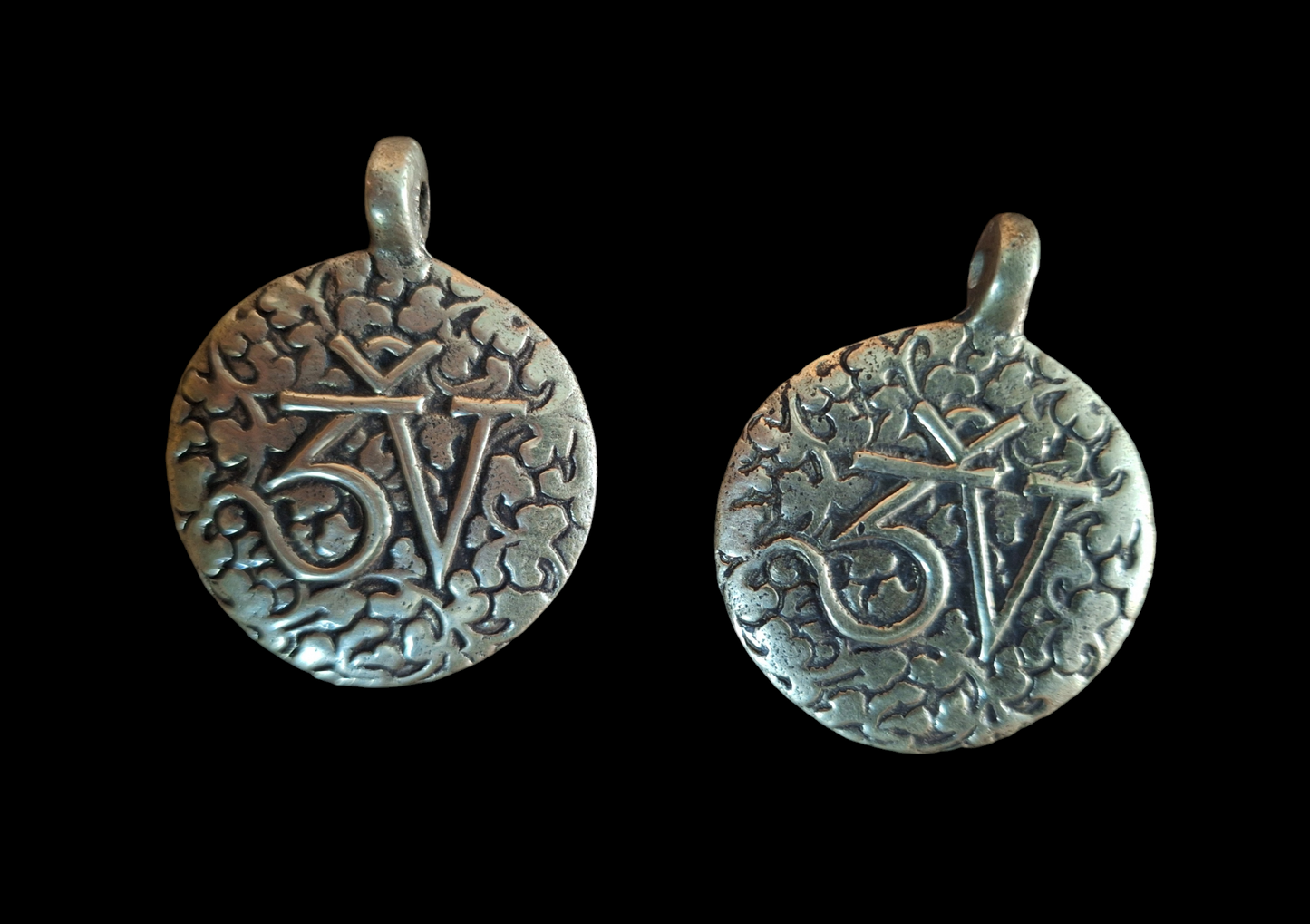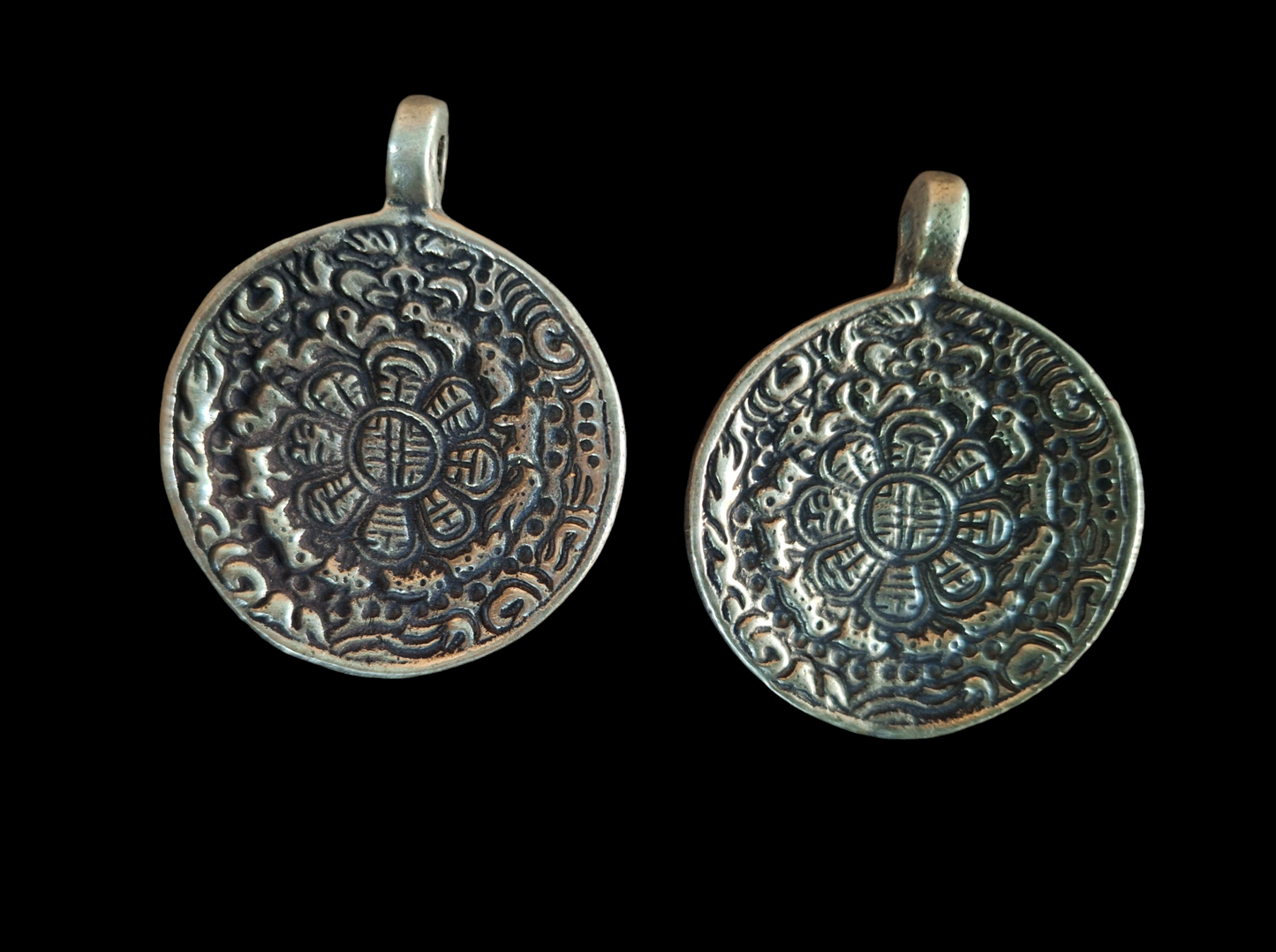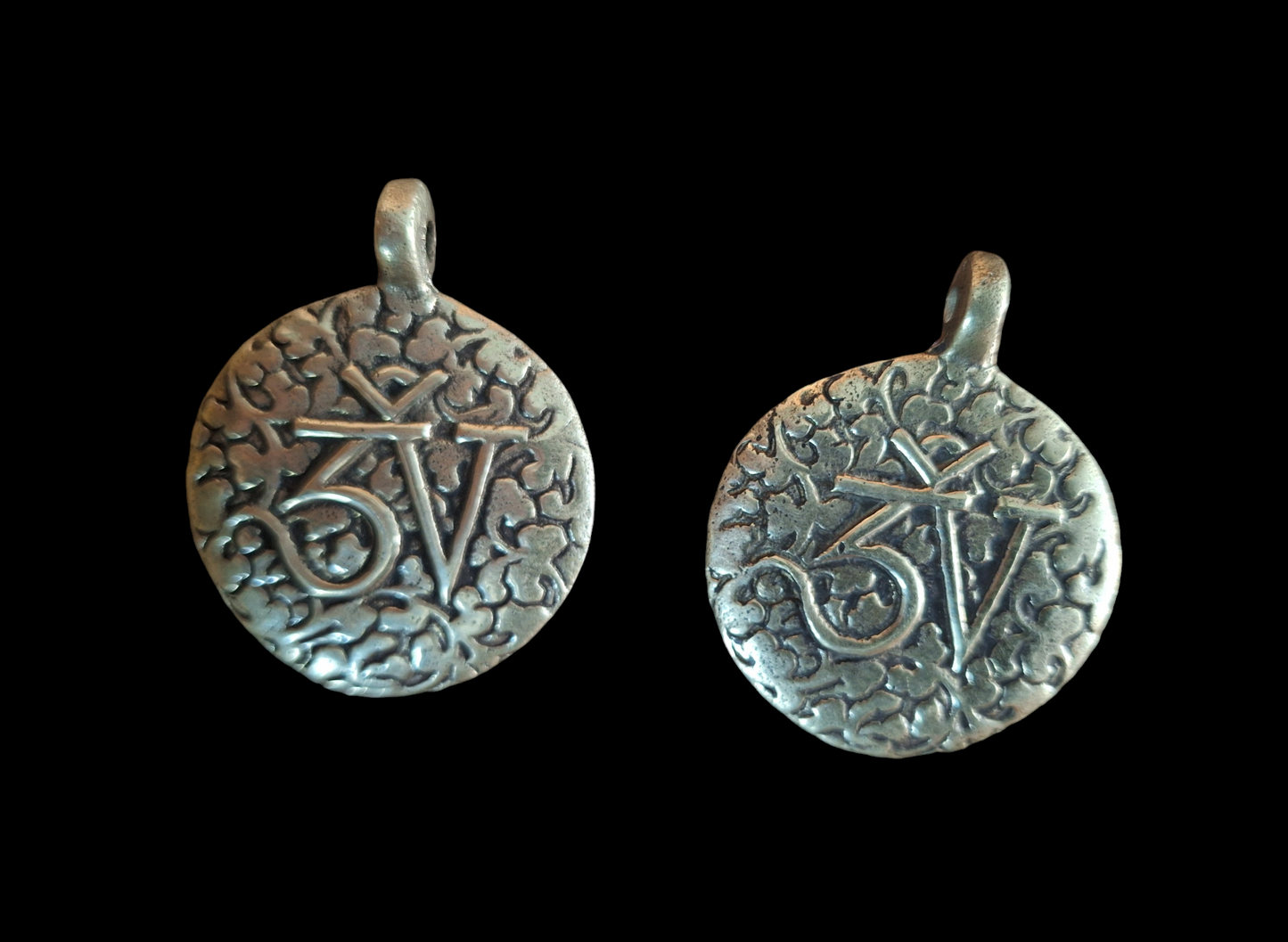Seawolf Shop
Nepalese melong Aum symbol and Si Pa Ho 45 millimeters
Nepalese melong Aum symbol and Si Pa Ho 45 millimeters
Couldn't load pickup availability
Share
Recently made thick, heavy brass mirrors from Nepal, with a diameter of 45 millimeters (measured without the eyelet). In Nepal, such mirrors are typically called 'melong' and traditionally often worn on the belt instead of around the neck.
These two are very similar to the other one in our webshop with the same decoration, but these two described here on this page are more cool/silver colored than the other one. Two available, we will handpick one at random for you.
Design characteristics:
These melongs are eleborately decorated on both sides. On the frontside of the melongs a high relief depiction of the symbol for the (mantra)word "Aum" can be seen, written in Tibetan alphabet. This symbol and its sound, when spoken as an individual seed mantra or as part of a bigger mantra is said to be the all encompassing cosmic vibration of the universe. It represents all times, all awareness of times and the overtaking of time itself. When recited, it activates and energizes all the chakra's.
On the backside of these melongs, a depiction of the traditional Tibetan astrological system can be seen; the astrological chart of Si Pa Ho, consisting of three schematic images:
1) In the center the mystical square Me Wa Gu can be seen. In the 9 parts the numbers from 1 to 9 are inscribed, the sum of which in each column is 15. This scheme forms in Tibetan-Mongolian astrology a numerological indication of the relationship between a person and deities and spirits. Each digit governs the year, they replace each other in reverse order.
In China this mystical square has been known since 2200 BCE and is called 'Lo Shu' or Nine Halls diagram; it derives from ancient Chinese mathematical and divination traditions, such as the art of Taoist Geomancy. Nowadays it is also widely known as an important emblem in Feng Shui; the 9 parts (also called 'palaces') then represent the 8 directions of the compass plus the central position, with each part having its own energy.
2) In the ring around the square the 8 trigrams ('Ba Gua') of Par Ha Ge can be seen. The trigram symbols come from very ancient origin; they derive from symbols found on ancient Chinese divination bones dating back as long as 11th century BCE. A related version of bone oracle is still used today by Turkic and Mongolian people, and also in the lineage of Spirit of Wolf Shamanism; 'Kazhiki'.
Doubled trigrams form 64 hexagrams, which form the core of the I Ching, the Book of Changes.
Each trigram is a divinatory grapheme and represents different dynamics, energies, cardinal points, animals, seasons etc. In depictions such as on these mirrors, where the 8 of them together form a circle, it symbolizes heavenly order, a healthy balance and right flow of energy.
3) In the outer ring, divided into sections, the 12 animals of the eastern zodiac can be seen. Just like the circular arrangement of the trigrams, also this motive adds to the idea of heavenly order. But also its presence, when used on shamanic mirrors, symbolizes control over time and space, an important core principle in the practice of shamanism.
Read more about the origin, design and usage of (shamanic) mirrors in the general description of our webshop collection "Mirrors and Melongs".





